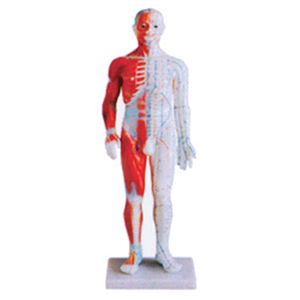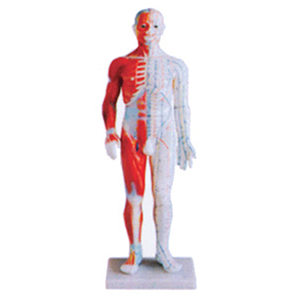ADA MED SUPPLY LIMITED
Phone:+86 19937901373
Tel:+86-0379-65160607
Email:adaanatomy@adaanatomy.com


As an important part of traditional Chinese medicine, acupuncture and moxibustion lies in the precise location of acupoints and standard acupuncture techniques. For medical students, mastering these skills requires long-term practical training, and the standard anatomical acupuncture model is now widely used as an auxiliary tool in teaching. So, is it suitable as a core tool for long-term skills training?

Standard anatomical acupuncture model
1. Advantages of the standard anatomical acupuncture model
The design of the standard anatomical acupuncture model is based on human anatomy and the theory of meridians and acupoints, which can accurately show the distribution of main meridians and acupoints in the human body. Its key advantages include:
- Visual visualization : Compared with traditional anatomical maps, dioramas can help learners establish a more intuitive sense of space and help pinpoint acupoints.
- Repetitive training : The model can be used by students for a long time for repeated practice, especially for students at the foundation stage.
- Risk-free environment : Before the actual operation, students can master the basic skills such as injection Angle and depth through the model to avoid the risks caused by direct operation on the patient.
2. Data support: What is the effect of model training?
Studies have shown that acupuncture students, after training with standard anatomical models, can improve their acupoint location accuracy by 20% to 35% and have a stronger memory of meridian direction. In addition, a survey of medical students found that more than 80% of respondents believed that anatomical models improved their understanding of acupuncture theory and helped them build initial operational skills. However, some students were still nervous in the follow-up real patient manipulation, indicating that relying on model training alone may not be a complete substitute for clinical practice.
3 How can I optimize my training?
To maximize the effectiveness of the standard anatomical acupuncture model in long-term skill training, the following strategies can be adopted:
- Combined with real human body exercise : After mastering the basic skills, add real person training to make up for the deficiency of model training.
- Use different types of training models : Some advanced simulators have more realistic skin texture and acupuncture feedback for more advanced training.
- Simulation of different pathological conditions : By adjusting the teaching content, students can practice under different individual conditions to improve their clinical adaptability.
4. Conclusion: The combination of model training and clinical practice can maximize the effect
The standard anatomical acupuncture model is undoubtedly an important tool for medical students in the early learning stage, which can help them master the basic acupuncture point positioning and acupuncture techniques. However, due to its shortcomings in hand feel, individualization and feedback mechanism, if it is used as the only tool for long-term training, it may limit students' practical operation ability. Therefore, in the long-term training process, it is recommended to combine real practice, clinical observation and more advanced simulation equipment to ensure the comprehensive development of skills.
To sum up, the standard anatomical acupuncture model is suitable as a training tool for basic and intermediate stages, but to reach the level of clinical operation, it is still necessary to combine a variety of training methods to make the learning more comprehensive, accurate and efficient.